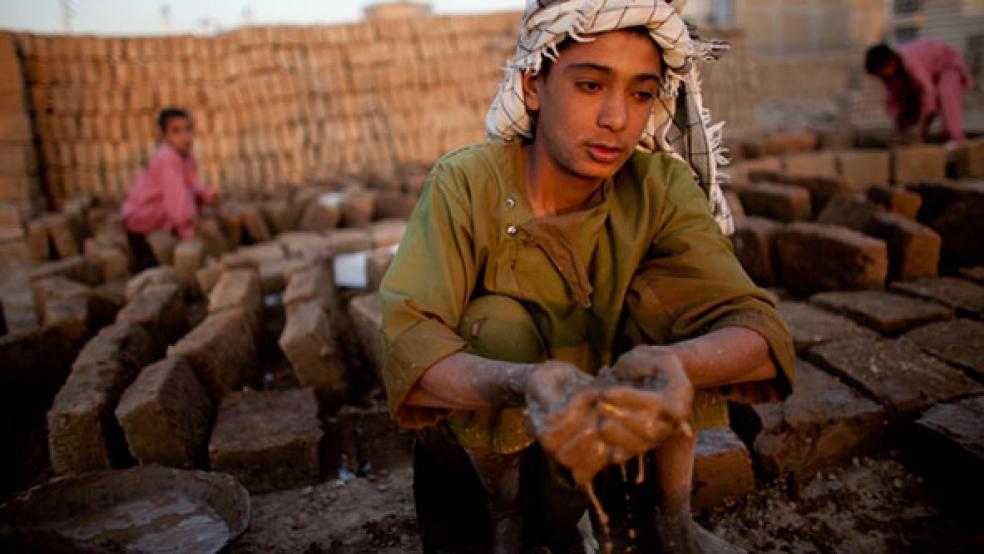As the Obama administration plans to finally close the book on the long and tragic U.S. military presence in Afghanistan by December 2016, we’re beginning to see tallies of the amount of American blood and treasure expended there over the past 14 years.
“The plot that led to the murder of 2,977 people on Sept. 11, 2001, originated in Afghanistan,” Rep. Mac Thornberry (R-TX), the chair of the House Armed Services Committee, recently wrote in The Washington Post. “Since then, more than 2,350 U.S. service members have sacrificed their lives in Afghanistan to help ensure that no more innocent Americans are victims of such savagery.”
Related: A $335 Million Power Plant in Afghanistan That Can Barely Turn on Lightbulb
Thornberry was arguing that the U.S. and allied forces should keep a significant residual force in place beyond next year, to preserve hard-won gains against the Taliban and back up the new government of President Ashraf Ghani. But on Tuesday, Special Inspector General John F. Sopko, the government’s watchdog over U.S. spending in Afghanistan, provided a troubling reminder of the vast sums of taxpayer dollars wasted on reconstruction efforts during America’s longest war.
Sopko has spent years documenting waste, fraud and abuse in the U.S. military’s efforts to rebuild war-torn Afghanistan. To put it in some perspective, he said, the U.S. has spent $110 billion on reconstruction projects in Afghanistan. When adjusted for inflation, that total exceeds the value of the entire Marshall Plan effort to rebuild Western Europe after World War II.
“Even now, 14 years on and with the U.S. military presence much diminished, nearly $12 billion more in reconstruction funds wait in the financial pipeline, appropriated but not yet spent,” he said. “The United States and our allies have pledged billions more for years to come.”
Related: What the Pentagon Is Hiding from Its Auditors
Over the past four year, Sopko’s independent government organization has issued 136 reports that contained nearly 400 recommendations and identified over $1 billion of potential savings. In addition, SIGAR's investigations unit has conducted 538 investigations that resulted in 73 arrests, 69 convictions or guilty pleas, and savings of over $500 million.
But progress has been limited. And despite frequent warnings from SIGAR, officials have moved ahead with projects that led to “massive U.S.-sponsored failures,” including:
n More than $8 billion in spending on counter-narcotics efforts in Afghanistan that have “failed by every conceivable metric.
n The purchase of nearly $500 million worth of airplanes that never could fly and had to be turned into scrap.
n Construction of a building that literally began to melt when it rained.
n A $500,000 health clinic that lacked water and electricity. Newborn babies had to be washed in a nearby river.
Beyond the massive waste of U.S. funds and personnel in trying to rebuild the war-torn country, the failed U.S. efforts to try to discourage Afghanistan’s production of poppies used in the manufacture of heroin has had serious social and financial repercussions in the United States and Europe.
Last year, Sopko reported that despite $7.6 billion of counter-narcotics efforts over the past ten years, illegal opium poppy cultivation was at a record high in Afghanistan. This has helped fuel a heroin epidemic in the United States that has drawn the attention of Democratic presidential candidate Hillary Rodham Clinton and other prominent politicians.
How the U.S. Wasted $7.6 Billion to Stop Afghan Heroin Production
“In past years, surges in opium poppy cultivation have been met by a coordinated response from the U.S. government and coalition partners, which has led to a temporary decline in levels of opium production,” Sopko wrote at the time. “However, the recent record-high level of poppy cultivation calls into question the long-term effectiveness and sustainability of those prior efforts.”
Sopko said Tuesday that there has been no improvement in the situation and that the heroin crisis is bedeviling Great Britain and other European countries as well as the U.S. “Afghanistan’s problems extend far beyond its borders and we ignore them at our peril,” he said. “Afghan heroin floods the streets of European cities and Afghan refugees are estimated to make up the third largest group crossing European borders.”
In conclusion, he said that the mission to reconstruct Afghanistan remains critical – for both humanitarian and national-security reasons. And with $12 billion of spending by U.S. agencies still in the pipeline, “There is both a necessity and urgency to improve the effectiveness of our efforts, and the time to finally making lasting difference in the outcome.”
“However, we should not kid ourselves about Afghanistan,” he said. “It will continue to be a long struggle. Defeating a determined insurgency, improving health and education, altering attitudes toward women, reducing corruption, and building government competence are not casual, short-term undertakings.”





